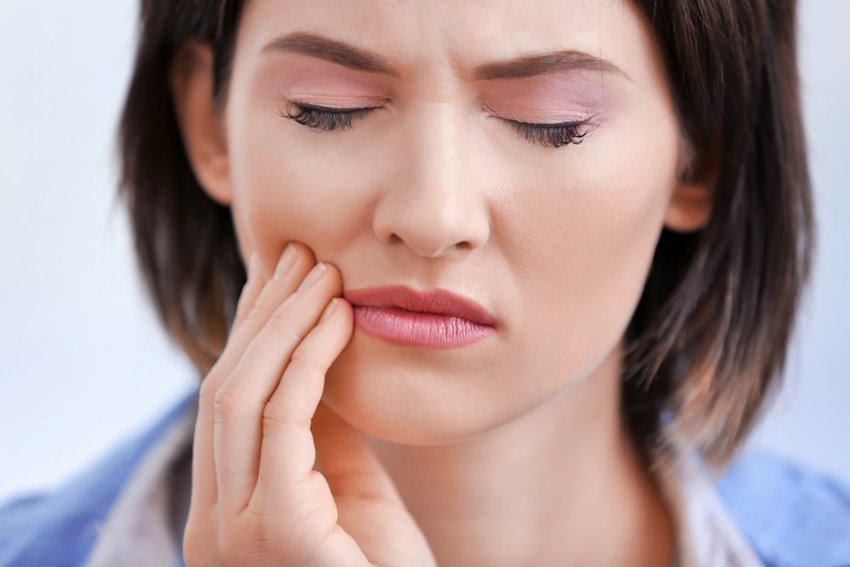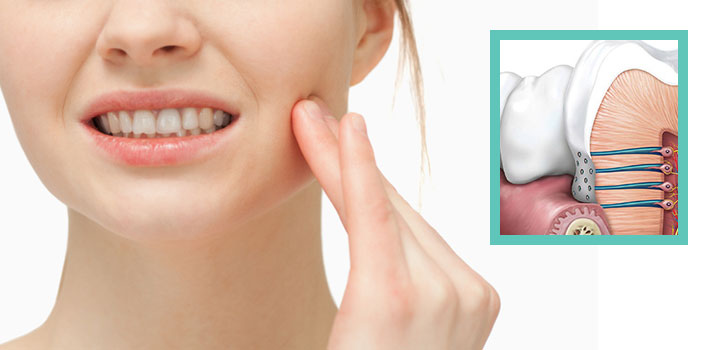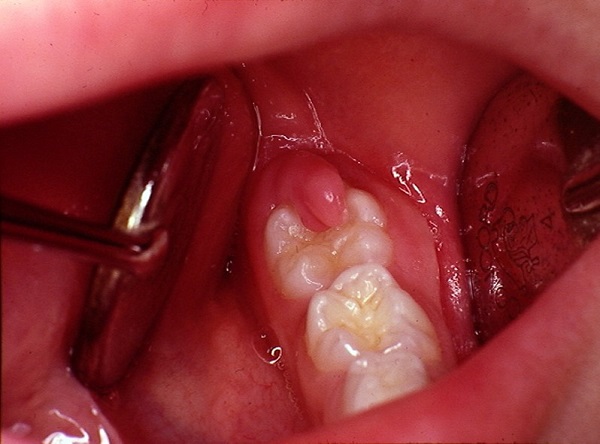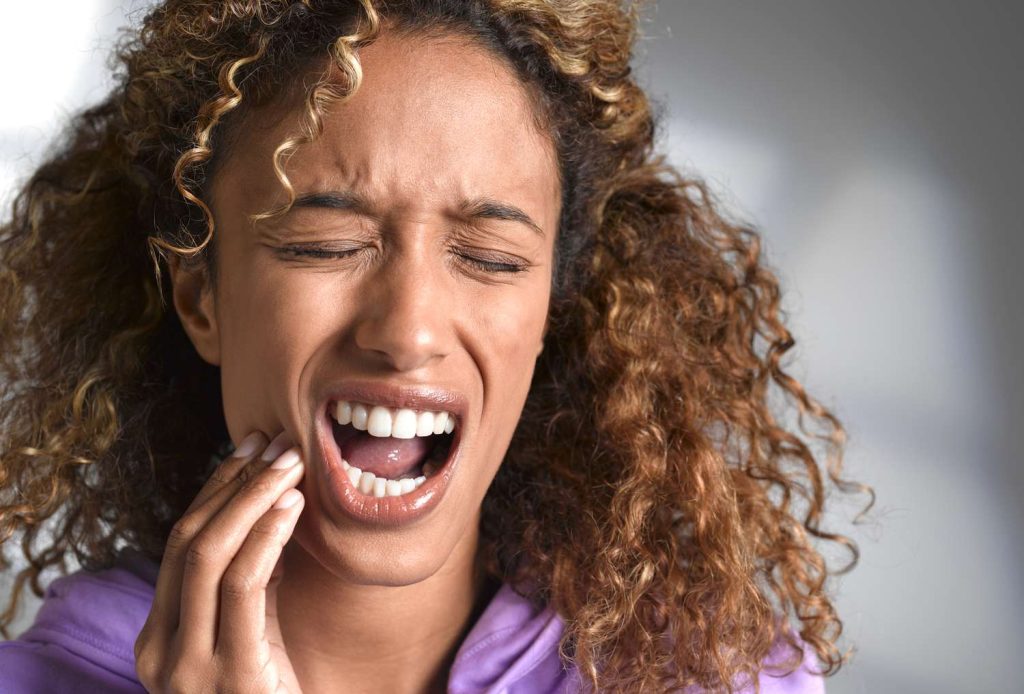tooth pain when biting down
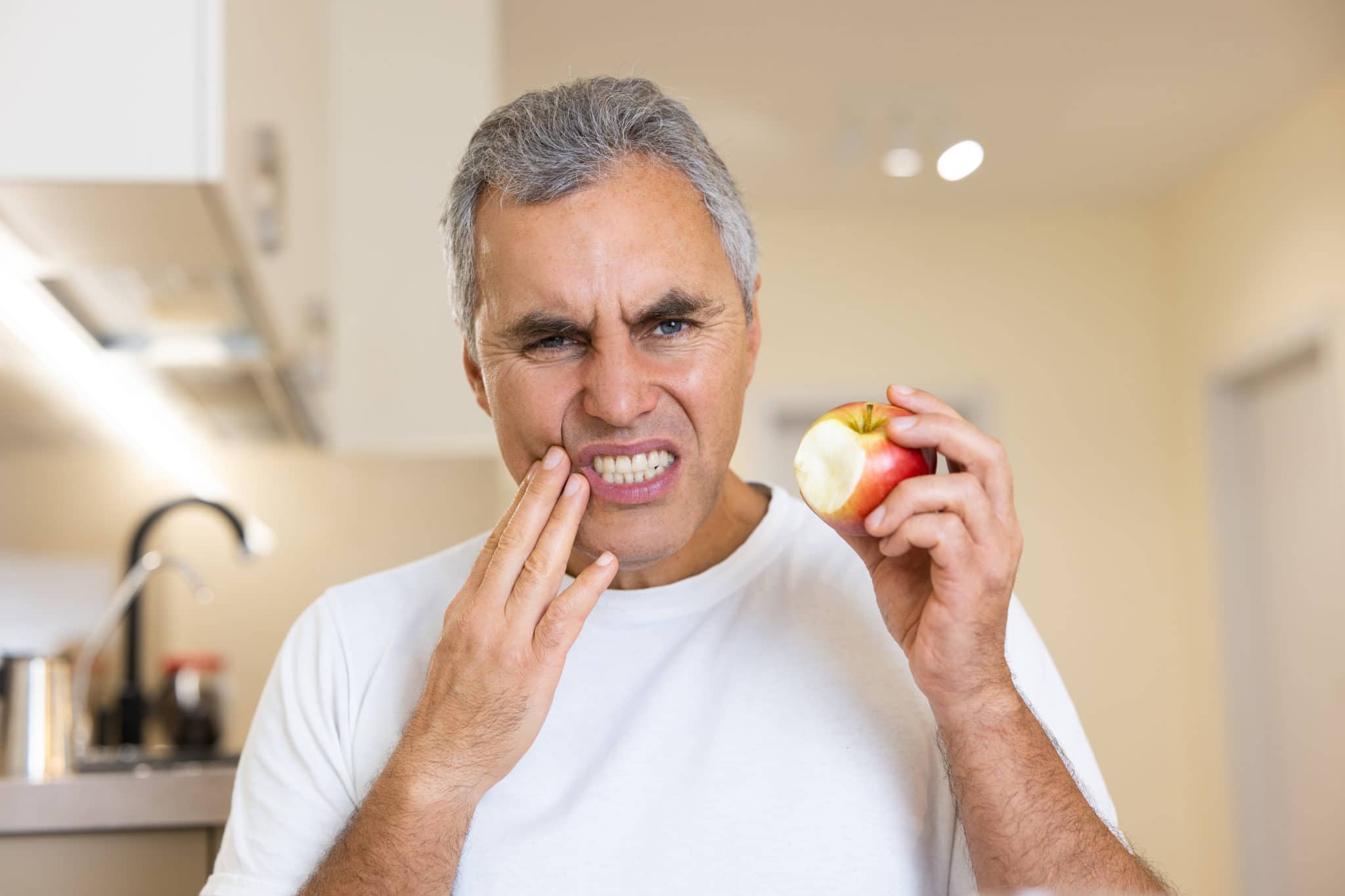
Tooth Pain When Biting Down: Causes, Diagnosis, and Treatment
Tooth pain when biting down can be an alarming and uncomfortable experience. It can interfere with eating, speaking, and overall oral health. Understanding the causes, diagnosis, and treatment options for this type of pain is crucial for maintaining good dental hygiene and preventing further complications. This comprehensive guide explores the various reasons behind tooth pain when biting down and provides practical advice on managing and alleviating this pain.
Common Causes of Tooth Pain When Biting Down
1. Dental Cavities and Decay
1.1. Description: Dental cavities are small holes in the teeth caused by tooth decay. When these cavities penetrate the deeper layers of the tooth, they can cause significant pain, especially when pressure is applied by biting down.
1.2. Symptoms:
- Sharp or throbbing pain when biting or chewing
- Sensitivity to hot, cold, or sweet foods and drinks
- Visible holes or pits in the teeth
- Discoloration or staining on the tooth surface
1.3. Treatment:
- Fillings: The most common treatment for cavities. The decayed portion of the tooth is removed and replaced with a filling material.
- Crowns: For more extensive decay, a crown may be needed to cover and protect the tooth.
- Root Canal: If the decay has reached the tooth’s pulp, a root canal may be necessary to remove the infected tissue.
2. Cracked or Fractured Tooth
2.1. Description: A cracked or fractured tooth can cause pain when biting down due to the pressure applied to the damaged area. Cracks can be caused by trauma, grinding, or biting on hard objects.
2.2. Symptoms:
- Sharp pain when biting down or chewing
- Sensitivity to temperature changes
- Pain that comes and goes
- Swelling around the affected tooth
2.3. Treatment:
- Bonding: Minor cracks can be treated with dental bonding, where a resin is applied to fill the crack.
- Crowns: More significant fractures may require a crown to cover and protect the tooth.
- Root Canal: If the crack has reached the pulp, a root canal may be necessary.
- Extraction: In severe cases, the tooth may need to be extracted.
3. Tooth Abscess
3.1. Description: An abscess is a pocket of pus caused by a bacterial infection. Abscesses can form in different parts of the tooth and gum and often result in severe pain, especially when pressure is applied.
3.2. Symptoms:
- Severe, persistent, throbbing pain
- Swelling in the face or cheek
- Sensitivity to hot and cold
- Fever
- Swollen, tender lymph nodes
- A foul taste in the mouth
3.3. Treatment:
- Antibiotics: To clear the infection.
- Drainage: The abscess may need to be drained by a dentist.
- Root Canal: To remove the infected pulp and save the tooth.
- Extraction: If the tooth cannot be saved, it may need to be extracted.
4. Gum Disease
4.1. Description: Gum disease, or periodontal disease, is an infection of the tissues that surround and support the teeth. Advanced gum disease can cause tooth pain, particularly when biting down, as the supporting structures are compromised.
4.2. Symptoms:
- Red, swollen, and bleeding gums
- Bad breath
- Loose teeth
- Receding gums
- Pain when chewing
4.3. Treatment:
- Deep Cleaning: Scaling and root planing to remove plaque and tartar from below the gum line.
- Medications: Antibiotics to treat infection.
- Surgery: In severe cases, surgical interventions like flap surgery or bone grafts may be necessary.
5. Tooth Sensitivity
5.1. Description: Tooth sensitivity occurs when the enamel wears down or the gums recede, exposing the underlying dentin. This can cause pain when biting down, particularly when eating or drinking hot, cold, or sweet substances.
5.2. Symptoms:
- Sharp pain when exposed to certain stimuli
- Pain when biting down
- Pain that comes and goes
5.3. Treatment:
- Desensitizing Toothpaste: Special toothpaste to help reduce sensitivity.
- Fluoride Treatments: Professional fluoride treatments to strengthen enamel.
- Bonding: Bonding resin applied to sensitive areas.
6. Malocclusion
6.1. Description: Malocclusion refers to misalignment of the teeth and bite. This can cause uneven pressure distribution when biting down, leading to tooth pain.
6.2. Symptoms:
- Pain when biting or chewing
- Difficulty biting or chewing
- Jaw pain
- Teeth grinding or clenching
6.3. Treatment:
- Orthodontics: Braces or other orthodontic treatments to correct alignment.
- Bite Adjustment: Adjusting the bite by reshaping the teeth.
7. Bruxism
7.1. Description: Bruxism is the habitual grinding or clenching of teeth, often occurring during sleep. This can cause tooth pain when biting down due to the constant pressure and wear on the teeth.
7.2. Symptoms:
- Jaw pain
- Headaches
- Tooth pain and sensitivity
- Worn teeth
7.3. Treatment:
- Mouth Guards: Custom-fitted mouth guards to protect teeth during sleep.
- Stress Management: Techniques to reduce stress, which can contribute to bruxism.
- Dental Correction: In some cases, dental treatments may be needed to repair damage caused by grinding.
Diagnosing Tooth Pain When Biting Down
Proper diagnosis is essential to determine the cause of tooth pain when biting down and to develop an effective treatment plan. The diagnostic process typically involves:
1. Clinical Examination
1.1. Visual Inspection: The dentist will visually inspect the teeth and gums for signs of decay, cracks, gum disease, and other abnormalities.
1.2. Palpation: The dentist may gently press on the teeth and gums to check for pain, swelling, and other signs of infection or inflammation.
1.3. Percussion: Tapping on the teeth to identify sensitive areas.
2. Diagnostic Tests
2.1. X-rays: Dental X-rays can reveal hidden issues such as cavities, abscesses, bone loss, and fractures.
2.2. Cold Test: Applying a cold stimulus to the teeth to check for sensitivity and nerve health.
2.3. Bite Test: Asking the patient to bite down on a cotton roll or other object to identify the specific tooth causing pain.
2.4. Electric Pulp Test: Using an electric current to test the vitality of the tooth’s pulp.
Treatment Options for Tooth Pain When Biting Down
The treatment for tooth pain when biting down depends on the underlying cause. Here are some common treatment options based on different scenarios:
1. Dental Restorations
1.1. Fillings: Used to treat cavities by removing the decayed portion of the tooth and filling it with a suitable material.
1.2. Crowns: A crown is a cap placed over a damaged tooth to restore its shape, size, and function.
1.3. Bonding: A tooth-colored resin applied to repair minor cracks and chips.
2. Endodontic Treatments
2.1. Root Canal: A root canal involves removing the infected or damaged pulp from the tooth, cleaning and disinfecting the root canals, and sealing them to prevent further infection.
3. Periodontal Treatments
3.1. Scaling and Root Planing: A deep cleaning procedure to remove plaque and tartar from below the gum line and smooth the tooth roots to promote healing.
3.2. Gum Surgery: In advanced cases of gum disease, surgical procedures may be needed to repair and regenerate damaged tissues.
4. Orthodontic Treatments
4.1. Braces: Braces can correct misaligned teeth and bite issues, reducing pain caused by malocclusion.
4.2. Bite Adjustment: Reshaping the teeth to achieve a more even bite.
5. Treatments for Bruxism
5.1. Mouth Guards: Custom-fitted mouth guards to protect teeth from grinding during sleep.
5.2. Stress Management: Techniques such as relaxation exercises, meditation, and counseling to reduce stress and prevent bruxism.
6. Treatments for Tooth Sensitivity
6.1. Desensitizing Toothpaste: Special toothpaste that helps reduce tooth sensitivity.
6.2. Fluoride Treatments: Professional fluoride treatments to strengthen enamel and reduce sensitivity.
Preventing Tooth Pain When Biting Down
Preventing tooth pain when biting down involves maintaining good oral hygiene, regular dental checkups, and addressing any underlying health issues. Here are some tips to help keep your teeth and gums healthy:
1. Oral Hygiene
1.1. Brushing: Brush your teeth at least twice a day with fluoride toothpaste. Use a soft-bristled toothbrush and gentle, circular motions to clean all surfaces of your teeth and gums.
1.2. Flossing: Floss daily to remove plaque and food particles from between your teeth and along the gum line.
1.3. Mouthwash: Use an antibacterial mouthwash to help reduce plaque and bacteria in your mouth.
1.4. Regular Dental Checkups: Visit your dentist regularly for checkups and cleanings. Early detection of dental problems can prevent them from becoming more serious and painful.
2. Diet and Nutrition
2.1. Limit Sugary and Acidic Foods: Reduce your intake of sugary and acidic foods and beverages, which can contribute to tooth decay and erosion.
2.2. Eat a Balanced Diet: Consume a diet rich in fruits, vegetables, lean proteins, and whole grains to ensure you’re getting the essential nutrients needed for strong teeth and gums.
2.3. Stay Hydrated: Drink plenty of water to help wash away food particles and bacteria from your teeth and gums.
3. Lifestyle and Health
3.1. Manage Stress: Practice stress-reducing techniques such as exercise, meditation, or yoga to help prevent bruxism and improve overall health.
3.2. Avoid Tobacco: Smoking and using other tobacco products can increase the risk of gum disease and oral cancer, leading to pain and other health issues.
3.3. Treat Health Conditions: Manage any underlying health conditions, such as sinus infections, autoimmune diseases, or vitamin deficiencies, with the help of your healthcare provider.
Understanding the Importance of Dental and Medical Care
It is crucial to seek dental and medical care promptly if you experience tooth pain when biting down. Delaying treatment can lead to more serious complications and prolonged discomfort. Here’s why professional care is important:
1. Early Detection and Treatment
Regular dental checkups and medical exams can help detect potential issues before they become severe. Early treatment can prevent minor problems from escalating into more significant, painful conditions.
2. Comprehensive Care
A dentist can provide comprehensive care tailored to your specific needs, addressing not only the immediate pain but also the underlying cause. This approach ensures long-term oral health and pain relief.
3. Preventive Measures
Professional dental cleanings and preventive treatments, such as fluoride applications and sealants, can help protect your teeth from decay and other issues that could lead to tooth pain.
4. Coordination of Care
If your tooth pain is related to a systemic health condition, a coordinated approach between your dentist and healthcare provider can ensure that all aspects of your health are addressed. This holistic approach can lead to more effective pain management and overall well-being.
When to Seek Immediate Help
While tooth pain when biting down can sometimes be managed with home remedies and over-the-counter medications, there are situations when immediate professional care is necessary:
1. Severe Pain
If the pain is severe and unrelenting, it may indicate a serious issue such as an abscess or a significant infection that requires prompt treatment.
2. Swelling and Fever
Swelling of the face, gums, or jaw, especially if accompanied by fever, can be a sign of a serious infection that needs immediate medical attention.
3. Difficulty Breathing or Swallowing
Any difficulty with breathing or swallowing, in conjunction with tooth pain, could indicate a spreading infection and should be treated as an emergency.
4. Persistent Symptoms
If your tooth pain persists despite home treatments and over-the-counter medications, it’s important to see a dentist to determine the cause and receive appropriate care.
Home Remedies for Temporary Relief
While professional treatment is essential for addressing the root cause of tooth pain when biting down, there are some home remedies that can provide temporary relief:
1. Saltwater Rinse
A saltwater rinse can help reduce inflammation and disinfect the affected area. Mix a teaspoon of salt in a glass of warm water and rinse your mouth for 30 seconds before spitting it out.
2. Cold Compress
Applying a cold compress to the outside of your cheek can help numb the area and reduce swelling. Use an ice pack wrapped in a cloth and apply it for 15-20 minutes at a time.
3. Over-the-Counter Pain Relievers
Non-prescription pain relievers, such as ibuprofen or acetaminophen, can help reduce pain and inflammation. Always follow the recommended dosage instructions.
4. Clove Oil
Clove oil has natural analgesic and antibacterial properties. Apply a small amount of clove oil to a cotton ball and place it on the affected tooth for temporary relief.
Conclusion
Tooth pain when biting down can be caused by various factors, including dental issues, systemic health conditions, and lifestyle factors. Understanding the potential causes and seeking professional care is essential for accurate diagnosis and effective treatment. Maintaining good oral hygiene, a healthy diet, and addressing any underlying health issues are key to preventing future episodes of tooth pain.
By staying proactive about your dental and overall health, you can reduce the risk of tooth pain when biting down and enjoy a healthier, pain-free life. Remember, if you ever find yourself asking, “why do all my teeth hurt suddenly,” it’s important to consult with a dentist or healthcare provider to get to the root of the problem and receive the care you need.
Related to read:
Best Oral Hygiene Practices For Optimum Oral Health.
Bruxism: Teeth grinding causes treatment and prevention.
How to keep your gums healthy and disease-free?
References
To ensure the information provided is accurate and up-to-date, the following sources were referenced:
- American Dental Association. (n.d.). Plaque and Tartar. Retrieved from ADA website
- Mayo Clinic. (n.d.). Dental Plaque. Retrieved from Mayo Clinic website
- National Institute of Dental and Craniofacial Research. (n.d.). Periodontal (Gum) Disease. Retrieved from NIDCR website
How Do You Fix a Tooth That Hurts When Biting Down?
When a tooth hurts when biting down, it can be a sign of several potential issues. Addressing the problem involves identifying the underlying cause and then applying the appropriate treatment. Here are steps to fix a tooth that hurts when biting down:
- Visit the Dentist: The first and most crucial step is to see a dentist. A thorough dental examination, including X-rays, will help determine the exact cause of the pain.
- Cracked Tooth: If the pain is due to a cracked tooth, the treatment will depend on the severity and location of the crack. Minor cracks might be treated with a filling or bonding material, while more significant cracks might require a crown to cover and protect the tooth. In severe cases where the crack extends to the root, a root canal or even extraction might be necessary.
- Dental Decay: If there is decay that hasn’t been previously noticed, a filling will be needed to restore the tooth. For deeper decay that has reached the pulp, a root canal treatment might be necessary.
- High Filling: Sometimes, a filling or crown might be too high, causing pain when biting. Your dentist can adjust the height of the filling or crown to ensure it aligns properly with the rest of your teeth.
- Infection or Abscess: If an infection or abscess is causing the pain, root canal therapy will likely be required to remove the infected pulp and save the tooth. If the infection is too severe, the tooth might need to be extracted.
- Gum Disease: If gum disease is contributing to tooth pain, a deep cleaning procedure called scaling and root planing can remove plaque and tartar from below the gum line. Improved oral hygiene and regular dental visits are crucial to prevent the progression of gum disease.
- Occlusal Adjustment: Misalignment of teeth can cause uneven pressure when biting, leading to pain. An occlusal adjustment can help correct the bite, reducing pain and discomfort.
- Night Guard: If bruxism (teeth grinding) is the issue, wearing a night guard can protect your teeth from excessive wear and reduce pain.
Why Does My Tooth Hurt When I Put Pressure on It?
Pain when putting pressure on a tooth can stem from various causes. Here are some common reasons:
- Cracked Tooth: A crack in the tooth can cause pain when biting down or applying pressure. The crack may not be visible but can cause sharp pain due to the movement of the crack during chewing.
- Tooth Decay: Untreated cavities can cause pain when pressure is applied. Decay weakens the tooth structure, making it sensitive to pressure.
- Infected Pulp: If the pulp inside the tooth is infected or inflamed due to deep decay or trauma, it can cause significant pain when pressure is applied.
- High Filling or Crown: A filling or crown that is higher than the surrounding teeth can cause pain when biting down because it takes more pressure than the other teeth.
- Gum Disease: Advanced gum disease can lead to the formation of pockets between the teeth and gums, causing pain and sensitivity when pressure is applied.
- Sinus Infection: Sinus infections can cause referred pain to the upper teeth, leading to discomfort when pressure is applied.
- Bruxism: Chronic teeth grinding or clenching can lead to tooth pain and sensitivity when pressure is applied.
Why Does My Tooth Hurt When I Bite Down But No Cavity?
If your tooth hurts when you bite down but there’s no cavity, other dental issues might be at play. Here are some possible reasons:
- Cracked Tooth Syndrome: Small or microscopic cracks in a tooth can cause pain when chewing or biting down. These cracks may not be visible on X-rays or during a visual examination.
- Occlusal Trauma: Trauma or injury to the tooth from biting something hard or an accident can cause pain when biting down. This type of pain is often due to damage to the ligaments that support the tooth.
- Tooth Mobility: Loose teeth due to gum disease can cause pain when pressure is applied. The mobility of the tooth can lead to discomfort during chewing.
- Dental Abscess: An abscess or infection at the root of the tooth can cause pain when biting down, even if there’s no visible cavity. The infection can cause inflammation and pressure around the tooth.
- Sinus Pressure: Sinus infections or sinusitis can cause referred pain to the upper teeth, especially the molars. This pain can be mistaken for tooth pain and may worsen when biting down.
- Recent Dental Work: Pain after recent dental work such as fillings, crowns, or root canals can be due to the tooth adjusting to the treatment. This pain should decrease over time, but if it persists, a follow-up visit to the dentist is necessary.
Will Tooth Nerve Pain Go Away?
Tooth nerve pain can be persistent and uncomfortable. Whether it will go away on its own depends on the underlying cause:
- Reversible Pulpitis: If the tooth nerve pain is due to reversible pulpitis, which is a mild inflammation of the dental pulp often caused by minor decay or recent dental work, the pain may go away on its own once the underlying issue is resolved and the tooth heals.
- Irreversible Pulpitis: If the pain is due to irreversible pulpitis, where the pulp is severely inflamed or infected, the pain will not go away on its own and will require treatment such as a root canal or extraction.
- Tooth Sensitivity: Nerve pain caused by tooth sensitivity, such as from enamel erosion or exposed roots, can be managed with desensitizing toothpaste and other treatments. The pain can diminish over time with proper care and avoidance of triggers.
- Cracked Tooth: If the nerve pain is due to a cracked tooth, the pain may persist or worsen without treatment. The crack needs to be addressed by a dentist to prevent further damage and alleviate pain.
- Dental Abscess: Pain from a dental abscess will not go away on its own and requires prompt treatment. The infection needs to be drained, and the affected tooth may require a root canal or extraction.
Conclusion
Tooth pain can arise from various underlying issues, each requiring specific treatments. Whether it’s pain from biting down, pressure, or nerve pain, it’s essential to consult with a dentist for a proper diagnosis and treatment plan. Maintaining good oral hygiene, regular dental check-ups, and addressing dental problems promptly can help prevent and manage tooth pain effectively. If you experience persistent or severe tooth pain, seeking professional dental care is crucial for long-term oral health and comfort.
Will Tooth Sensitivity Go Away?
Tooth sensitivity can range from a temporary issue to a chronic condition, depending on its cause. Here are some scenarios:
- Temporary Sensitivity: If tooth sensitivity is caused by recent dental procedures, such as fillings, crowns, or teeth whitening, it is often temporary and should subside within a few days to a couple of weeks as your teeth adjust and heal.
- Reversible Causes: Sensitivity due to factors such as minor enamel erosion, gum recession, or dietary habits (like consuming acidic foods and beverages) can often be managed and reduced with proper care. Using desensitizing toothpaste and avoiding triggers can help alleviate sensitivity over time.
- Underlying Dental Issues: Sensitivity caused by underlying dental problems, such as cavities, cracked teeth, or gum disease, will not go away on its own. These issues require professional treatment to address the root cause and alleviate sensitivity.
In summary, tooth sensitivity can go away if the underlying cause is identified and appropriately managed. For persistent sensitivity, it’s essential to consult with a dentist to determine the cause and receive tailored treatment.
How to Remove Tooth Sensitivity at Home?
While professional dental care is crucial for persistent sensitivity, there are several at-home remedies and practices that can help alleviate tooth sensitivity:
- Desensitizing Toothpaste: Use toothpaste specifically designed for sensitive teeth. These toothpastes contain compounds that help block the transmission of pain signals from the tooth surface to the nerve.
- Proper Brushing Technique: Brush your teeth gently with a soft-bristled toothbrush. Avoid brushing too hard, as this can wear down enamel and increase sensitivity.
- Fluoride Rinse: Use a fluoride mouthwash daily to help strengthen tooth enamel and reduce sensitivity.
- Avoid Acidic Foods and Beverages: Limit your consumption of acidic foods and drinks, such as citrus fruits, sodas, and wine, which can erode enamel and exacerbate sensitivity.
- Maintain Good Oral Hygiene: Regular brushing and flossing help prevent gum recession and protect against decay, both of which can cause sensitivity.
- Salt Water Rinse: Rinsing with a warm salt water solution can help reduce inflammation and promote healing in your gums, which may reduce sensitivity.
How to Repair Tooth Sensitivity?
Repairing tooth sensitivity involves addressing the underlying causes and protecting your teeth. Here are some steps to take:
- Dental Treatment: Visit your dentist to determine the cause of your sensitivity. Treatments may include:
- Fluoride Treatments: Professional fluoride applications can help strengthen enamel and reduce sensitivity.
- Dental Bonding: If your sensitivity is due to exposed roots or worn enamel, your dentist may apply bonding resin to protect sensitive areas.
- Gum Grafting: In cases of significant gum recession, a gum graft can cover exposed roots and reduce sensitivity.
- Root Canal: For severe sensitivity caused by nerve damage or infection, a root canal treatment may be necessary.
- Desensitizing Agents: Use products containing desensitizing agents, such as potassium nitrate or stannous fluoride, to help block pain signals from reaching the nerves in your teeth.
- Sealants: Your dentist may apply a sealant to sensitive areas to provide an additional layer of protection against sensitivity.
- Dietary Changes: Adjust your diet to reduce the intake of acidic and sugary foods that can contribute to enamel erosion and sensitivity.
How to Rebuild Tooth Enamel?
Rebuilding tooth enamel is essential for protecting your teeth and reducing sensitivity. While enamel cannot be regrown once it’s lost, it can be remineralized to strengthen and protect it. Here are some steps to help rebuild and maintain strong enamel:
- Fluoride Treatments: Use fluoride toothpaste and mouthwash. Fluoride helps remineralize and strengthen enamel, making it more resistant to acid attacks.
- Calcium and Phosphate: Products containing calcium and phosphate can aid in the remineralization process. Some toothpaste and mouth rinses are specifically formulated with these minerals.
- Proper Nutrition: Consume a balanced diet rich in vitamins and minerals, particularly calcium and phosphorus. Dairy products, leafy greens, nuts, and fish are excellent sources of these nutrients.
- Hydration: Drink plenty of water, especially fluoridated water, to help maintain a healthy oral environment and wash away acids and bacteria.
- Avoid Acidic Foods and Beverages: Minimize consumption of acidic foods and drinks, such as sodas, citrus fruits, and wine, which can erode enamel. If you do consume them, rinse your mouth with water afterward.
- Chewing Sugar-Free Gum: Chewing sugar-free gum can stimulate saliva production, which helps neutralize acids and promote remineralization.
- Regular Dental Check-Ups: Visit your dentist regularly for check-ups and professional cleanings. Your dentist can provide fluoride treatments and monitor the health of your enamel.
What Is the Best Toothpaste for Sensitive Teeth?
Choosing the right toothpaste is crucial for managing tooth sensitivity. Here are some of the best types of toothpaste for sensitive teeth:
- Sensodyne: Sensodyne is a well-known brand that offers a range of toothpaste specifically formulated for sensitive teeth. It contains potassium nitrate or stannous fluoride, which helps block pain signals and protect against sensitivity.
- Colgate Sensitive: Colgate Sensitive toothpaste is designed to provide relief from sensitivity and protect against future pain. It contains potassium nitrate and fluoride to help strengthen enamel.
- Pronamel by Sensodyne: Pronamel toothpaste is designed to protect against acid erosion and strengthen enamel. It helps reduce sensitivity and is suitable for daily use.
- Crest Pro-Health: Crest Pro-Health toothpaste offers a variety of benefits, including sensitivity relief, cavity protection, and gum health. It contains stannous fluoride to help protect against sensitivity.
- Arm & Hammer Sensitive: Arm & Hammer Sensitive toothpaste contains baking soda and potassium nitrate to provide effective sensitivity relief while also promoting overall oral health.
- Tom’s of Maine Rapid Relief Sensitive: This natural toothpaste contains arginine and calcium carbonate to help seal the pathways to the nerves in your teeth, providing rapid relief from sensitivity.
When choosing a toothpaste for sensitive teeth, look for products that contain desensitizing agents like potassium nitrate or stannous fluoride. Regular use of these toothpaste can help manage and reduce tooth sensitivity over time.
Conclusion
Tooth sensitivity is a common dental issue that can be managed and alleviated with proper care and treatment. Understanding the causes of sensitivity, implementing at-home remedies, seeking professional dental care, and using the right toothpaste can significantly improve your comfort and oral health. If sensitivity persists or worsens, it’s essential to consult with a dentist to identify and address any underlying dental problems.
4o






